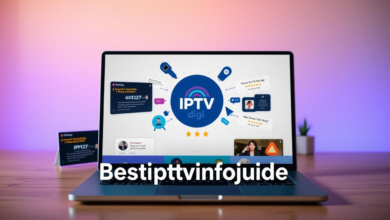Document Verification: Building Trust in a Digital-First World

In an economy where customers open accounts, sign contracts, and transfer funds from their phones, document verification has become a cornerstone of digital trust. It is the process of confirming that an identity or legal document is genuine, unaltered, and presented by the rightful holder. Banks, fintechs, marketplaces, healthcare providers, and public agencies all rely on robust controls to keep fraud out while keeping legitimate users moving. Done well, verification protects organizations from losses and fines, while giving customers a fast, confident onboarding experience.
What Document Verification Involves
At its simplest, verification ensures that a document is authentic and that its contents match the person or entity submitting it. For individuals, this typically includes passports, national IDs, driver’s licenses, residence permits, and proof of address. For businesses, it extends to certificates of incorporation, registers of directors, and beneficial ownership statements. Effective programs combine visual inspection, data validation, and security-feature analysis to confirm integrity. These document checks look for telltale signs such as mismatched fonts, incorrect MRZ lines, tampered photos, or invalid barcodes, and they validate numbers and dates against accepted standards or authoritative sources.
The Rise of Digital Document Verification
Modern customer journeys demand speed without sacrificing assurance. Digital document verification answers this challenge by using computer vision, optical character recognition, and machine learning to assess images or scans captured on mobile or web. Systems analyze holograms, microprint, and layout geometry, detect edits or compositing, and compare faces in documents with live selfies. Liveness detection prevents spoofing using masks or screens, while metadata checks flag suspicious capture conditions. When combined with database lookups and sanctions screening, digital flows compress what once took days into minutes, creating a smoother path from application to approval.
Why Verification Matters for Risk and Compliance
Document integrity sits at the heart of KYC and AML regimes. If a document is forged, every subsequent control is compromised. Strong verification closes the front door to identity theft, money muling, and synthetic identities. It also supports regulatory expectations around due diligence, record keeping, and auditability. Regulators increasingly expect firms to demonstrate not only that they examined documents but how they examined them, what evidence was recorded, and which rules or models drove the decision. By embedding verification in a well-documented workflow, organizations reduce penalties, prevent account takeovers, and protect brand reputation.
Core Steps in Document Checks
A consistent flow turns verification from a risky guess into a defensible decision. First, the system collects high-quality images using capture guidance to avoid glare, blur, and cutoffs. Next, text is extracted and validated against format rules, issuing-country templates, and checksum logic. Security features are analyzed at the pixel level to confirm the presence and correct placement of holograms, guilloches, and machine-readable zones. Face matching compares the portrait to a live capture, while liveness assures that a real person is present. Finally, the platform assembles an audit trail including images, parsed fields, match scores, and analyst notes. These layered document checks make it difficult for fraudsters to slip through with crude edits or high-resolution fakes.
Document Verification Services and When to Use Them
Many organizations partner with specialized document verification services rather than building every capability in-house. The advantages include access to global template libraries, continuously updated fraud signals, and compliance-ready reporting. Services can be consumed via APIs and embedded directly into web or mobile onboarding, case-management tools, or branch workflows. They are especially valuable for companies operating across borders, where document types, security features, and language conventions vary widely. By leveraging a service, teams can focus on experience design, decision policy, and exception handling while the provider maintains the technical engine and template coverage.
Balancing Speed, Accuracy, and User Experience
Verification must be rigorous without becoming a roadblock. The best implementations guide users through capture with real-time prompts, explain why additional steps are needed, and return clear outcomes quickly. False positives drive abandonment and support costs, while false negatives invite fraud. Calibrating thresholds, offering manual review for edge cases, and tailoring flows by risk segment creates the right balance. Low-risk customers may pass through streamlined paths, while unusual geographies, high transaction values, or inconsistent data can trigger enhanced checks. This risk-based approach respects good users’ time and concentrates human expertise where it matters most.
Privacy, Security, and Responsible AI
Handling identity documents entails sensitive data, so privacy and security must be designed in from the beginning. Data should be encrypted in transit and at rest, access tightly controlled, and retention limited to what regulations and business needs require. Vendors should document how models were trained and how bias is monitored, and they should provide explainability for decisions that affect access to essential services. For many jurisdictions, explicit consent, clear user notices, and data subject rights are legal requirements as well as trust builders. Responsible digital document verification is as much about governance as it is about algorithms.
Operationalizing Verification Across the Customer Lifecycle
Verification is not just an onboarding step. Changes in behavior, device fingerprints, or network signals may call for reverification, especially before high-risk actions like raising limits, adding beneficiaries, or initiating large payouts. Periodic refreshes ensure that expired documents are replaced and that profiles remain current. Integrating verification outcomes with case management, transaction monitoring, and customer support creates a unified risk picture. Analysts can see the original evidence, the scoring logic, and any subsequent events, enabling faster, better-informed decisions during reviews and investigations.
Common Pitfalls and How to Avoid Them
Programs often struggle with poor image quality, inconsistent policy interpretation, and fragmented tools. Clear capture guidance and automated quality gates reduce resubmissions. A central policy library, with examples of acceptable and unacceptable documents, keeps reviewers aligned. Consolidating point solutions into a coherent stack avoids rework and conflicting results. Measuring key indicators such as pass rates, manual review time, fraud charge-offs, and customer completion rates helps teams tune rules and invest where improvements yield the greatest impact. Continuous testing against known-good and known-bad samples ensures that verification remains effective as fraud tactics evolve.
The Future of Document Verification
The next phase will blend cryptographic credentials, issuer-verified data, and on-device checks. As digital identities and verifiable credentials gain traction, more documents will be validated against issuer signatures rather than images alone. Passive liveness and behavioral signals will reduce friction further, and privacy-preserving techniques will allow confirmation of attributes without exposing full documents. Even in that future, however, organizations will still need robust document verification to bridge the gap between legacy IDs and new standards, and to manage the diversity of documents in global commerce.
Conclusion
Trust is earned one interaction at a time, and document verification is often the first test. By combining precise document checks, scalable digital document verification, and dependable document verification services, organizations can welcome legitimate customers swiftly while keeping fraud at bay. The result is a safer ecosystem where compliance is met, experiences are smoother, and growth is sustained by confidence that each identity—and each document—can stand up to scrutiny.




